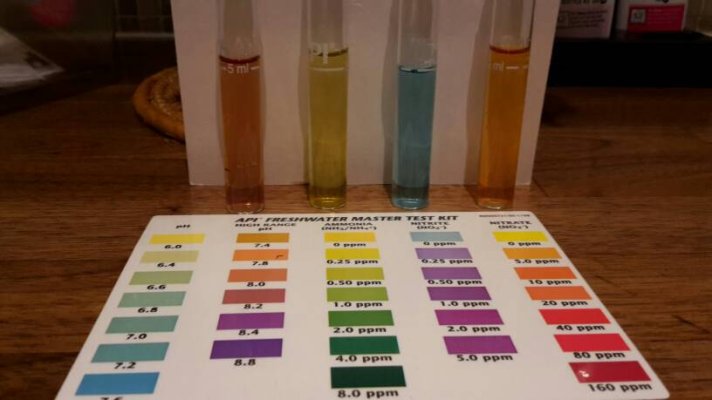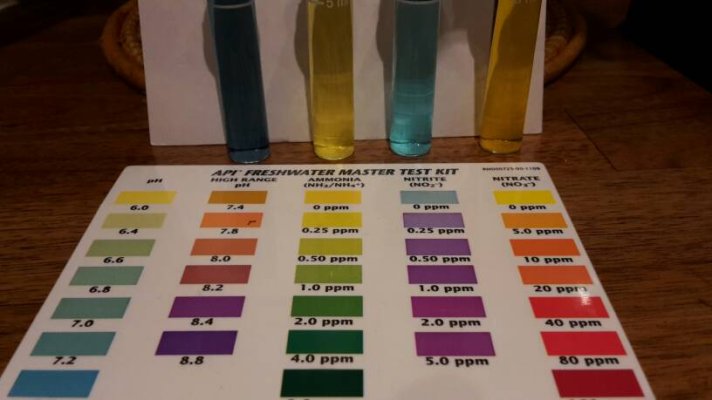nataliedd
Aquarium Advice Activist
- Joined
- Oct 13, 2014
- Messages
- 159
Not wanting to make things confusing for anyone, but have you checked to see how hard the water is ? Hardness is different from pH.. though often higher pH goes with hard water.
Hard water isn't as suited for tetras as it is for some other species, like danios or rasboras. Tetras may adapt to harder water but it's not ideal for them. Most live bearing fish do well in hard water though.
But first, for sure, you need to be certain the tank has cycled. If I go back to check, I'll lose this bit, so did you have plants in the tank ? If not, they can help speed up a cycle, and also use up nitrates when nitrates appear. A few easy low light plants would be a good addition. Anubias or java fern or java moss are the standard low light plants, and there are others as well.
I am not sure if the API master kit has the GH and KH test in it or not, but that is how you test for hard water. GH means general hardness, KH means carbonate hardness. It's not the easiest thing to understand if you aren't into chemistry, but GH is roughly about the amount of calcium and magnesium in the water, while KH is about carbonates in the water. Magnesium and calcium [ or lime] are the two minerals most associated with hard water, the ones that make scale in the kettle or coffee maker. If you do have hard water, the advice earlier to use a pH down product would not work because the carbonates in hard water resist the change..and you get what another poster mentioned, with the pH going up & down and stressing the poor fish badly.
Unless you want to put in an RO filter system on the house water and then adjust that water to suit your fish, it's best to keep fish that are suited to the kind of water you have from the tap.
Don't have plants yet, I know they are better to have than plastic but are thoughts were to grasp caring for fish first before throwing in caring for plants.
I've never heard about testing for GH and KH, is this something I need to do??
Sent from my SM-G800F using Aquarium Advice mobile app


